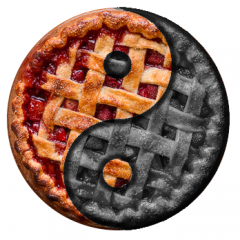"What should my refrigerator controls be set at?"
How many times have you been on a refrigerator service call and the customer asks you, "What should the controls on my refrigerator be set at?" You notice that they do not have any thermometers in their fridge and do a mental face-palm. How do you even begin to explain to this customer that the single most important indicator of a refrigerator's health - and the way you determine where to set the controls - are the temperatures inside the freezer and fresh food compartments?
Relax, compadre, cuz that's the whole point of this blog post: to help you explain to your customer the importance of temperature measurement in a refrigerator simply and clearly and to provide them the means by which to do it.
Begin by explaining to your customer that temperature is, in fact, the single most important number that tells the story about the health of that box. Further, home refrigerators are very sensitive to changes in conditions and usage: changes in ambient temperature throughout the seasons; frequency and duration of door openings; condition of the door gaskets and their ability to seal out warm, humid outside air; the temperature of foods placed inside the compartments; amount of pet fur on the condenser, etc.
Next, I explain to the customer that unless their refrigerator controls actually measure and display the temperatures inside the compartments, the indexing numbers provided on the controls are simply a way of noting the relative changes that they need to make to the control dials in order to achieve the target temperatures inside the compartments. And how are they going to know what those target temperatures are unless they are actually measuring the temperatures inside the compartments?
This is where refrigerator thermometers come into play. I buy these refrigerator thermometers by the dozen and stock them in The Guru Mobile: https://www.amazon.com/dp/B000BPE88E?tag=mrssamskit-20&camp=0&creative=0&linkCode=as4&creativeASIN=B000BPE88E&adid=18AMRCHKPEBS5M25BG72&
I tell my customers that they should have one of these thermometers in each compartment of their refrigerator box: fresh food and freezer. Here's how I instruct them on using the thermometers and setting their refrigerator controls according to temperature measurements.
Fresh-food compartment:
For normal, day-to-day tracking of the temperature, place the thermometer in the central area of the compartment (not on the door). Ideally you want it to be easily visible whenever you open the door so that you can glance at the display regularly. Make it a habit to look at the thermometer at least once a day, perhaps in the morning the first time you open the door. The needle should be in the purple “REF.” section, approximately 33 to 40 degrees.
Be aware that opening the door of the fridge, particularly if the ambient conditions are warm and/or humid, can raise the temperature quite a bit in the compartment. If you notice that the temperature is above 40, and the door has been opened recently, leave the door closed for awhile then check the temperature again.
If the temperature is consistently above 40 by a few degrees, you should adjust the cold controls of your refrigerator to see if you can get it down into the 30’s. (See your fridge’s instruction manual for help on this - how to adjust the controls can vary among different brands and models.) Any adjustment to the controls can take several hours or overnight for the temperatures to settle to their new level.
Freezer:
Place the thermometer in a central location in your freezer and monitor the temperatures as described above.
Although frozen food is safe at any temperature below 32 degrees (the blue zone), a normally-operating freezer should be between 0 and 5 degrees. If you see temperatures consistently above that, try adjusting the freezer’s control to a colder setting.
If their temperatures remain above-normal despite adjusting the refrigerator’s controls, I instruct them to call me for service as soon as possible to avoid food spoilage and loss.
-
.png) 2
2

.png.62a7d7300de75dfbd19764a318766630.png)





0 Comments
Recommended Comments
There are no comments to display.